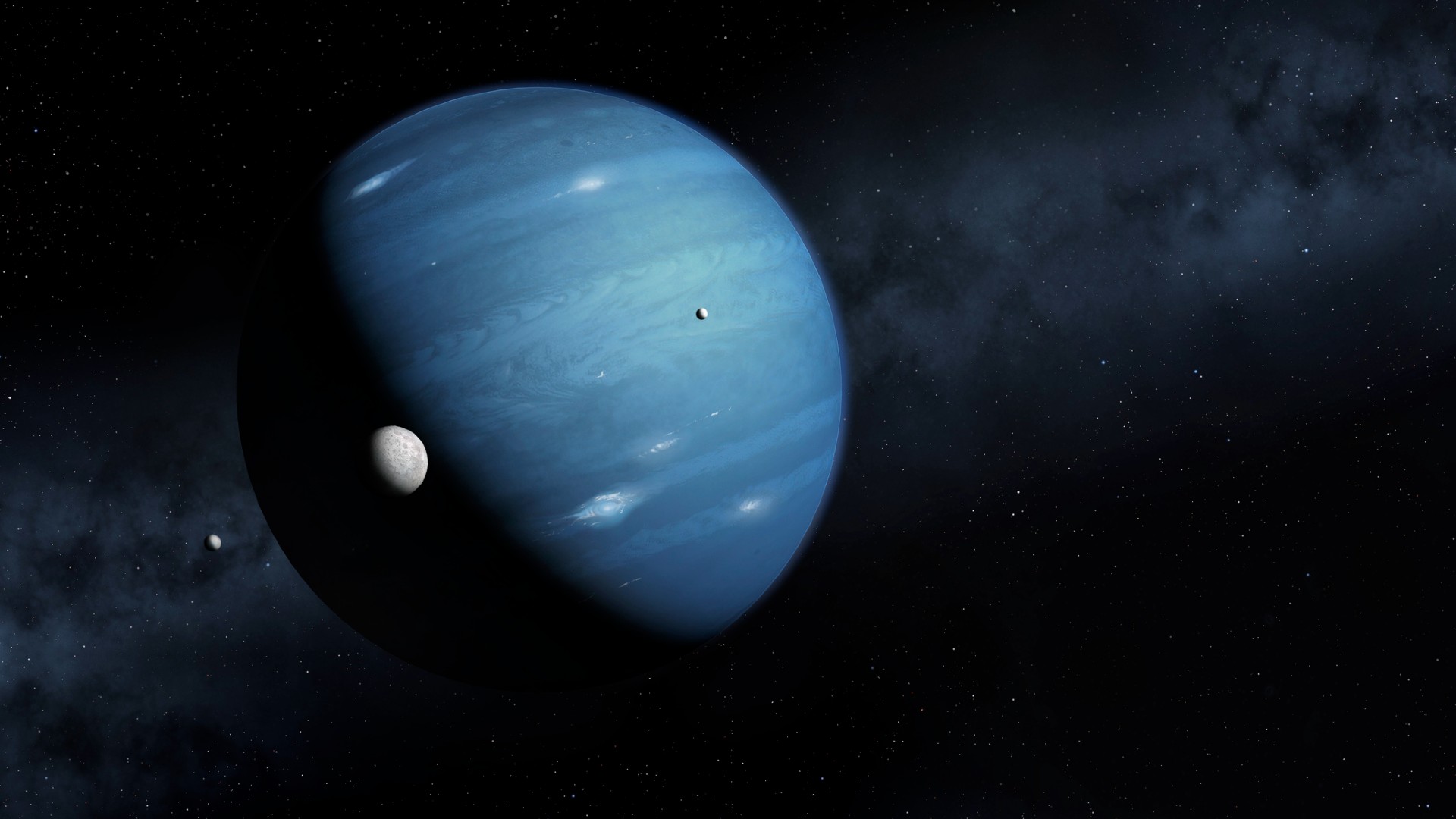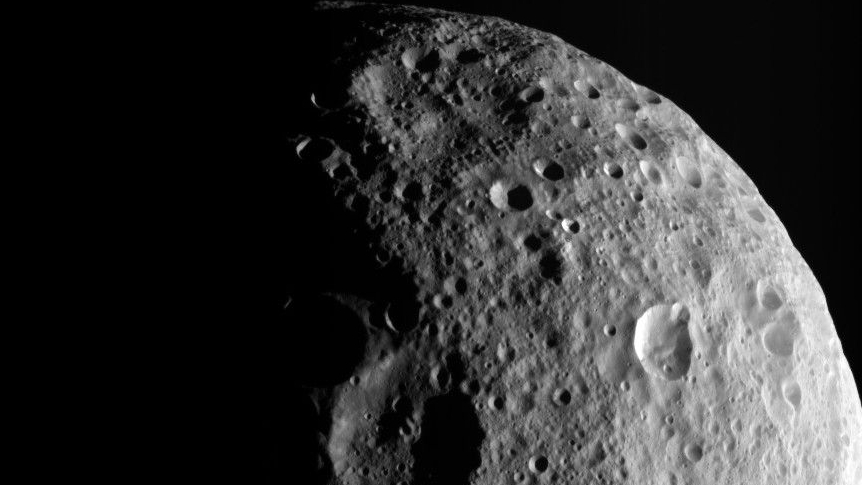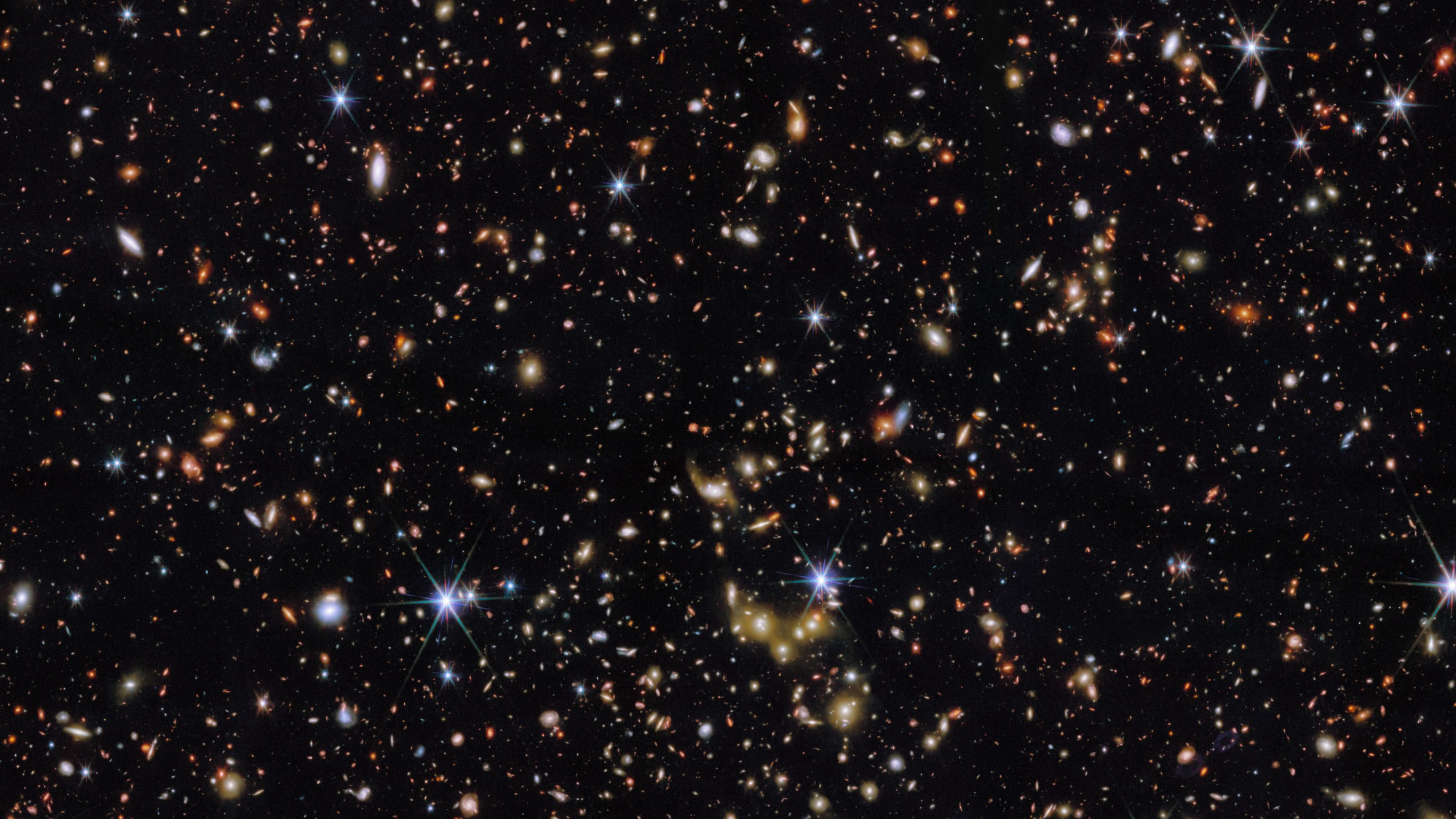Former space shuttle commander Pam Melroy talks space station and diversity in 'Virtual Astronaut' webinar
Tune in to "The Virtual Astronaut" talk with Melroy on Oct. 24!

One of the greatest legacies of the International Space Station is the diversity it brought to the astronaut corps, former space shuttle commander Pam Melroy will discuss with a virtual audience Saturday (Oct. 24).
Melroy, a three-time retired spaceflyer and former U.S. Air Force test pilot, will speak about her experiences in space as part of the Virtual Astronaut series, and you can buy tickets here.
The space shuttle program, which ran between 1981 and 2011, offered a much broader group of people the chance to go into space, Melroy told Space.com. The NASA Mercury, Apollo, Gemini and Skylab programs that came before largely consisted of test pilots, who were all white, American and male.
Related: NASA's Space Shuttle Program In Pictures: A Tribute
That changed quickly when the space shuttle program began. Sally Ride, the first American woman astronaut (who was also the first known LGTBQ+ astronaut, though her sexuality was only revealed after her death) ; Guy Bluford, first African-American astronaut Guy Bluford and West German astronaut Ulf Merbold, the first non-United States national on a U.S. spacecraft all reached orbit in 1983, and that was just a taste of things to come.
Soon, international astronauts started to rapidly acquire more responsibilities, so much so that by the 1990s they began to conduct spacewalks and take on more roles as mission specialists — an important precursor to the partnerships that made the space station possible, Melroy said. With this new program, women began doing spacewalks and flying the space shuttle. The first female shuttle commander, Eileen Collins, took the helm of a space shuttle in 1999 and Melroy was the second woman to do so during her last mission, STS-120, in 2007.
"I obviously didn't plan it that way," Melroy said of the milestone. "I was born at just the right time when women were allowed to be military pilots, which was a prerequisite for being a military test pilot, which was a prerequisite for being a space shuttle commander. I was extremely fortunate to have those opportunities line up with my life."
Get the Space.com Newsletter
Breaking space news, the latest updates on rocket launches, skywatching events and more!
Melroy also enjoyed meeting up in orbit with the first female space station commander, Peggy Whitson, who went on to command the orbiting complex a second time in 2017 while setting the record for the longest accumulated time in space by a woman, 665 days.
"I knew when I was watching 'Star Trek' as a kid that someday, I would be [the] commander of a space vehicle," Melroy recalled. "But what I didn't know was there was another little girl [Whitson] growing up on a farm in Iowa, with the same dream. And both of us were in space at the same time."
Melroy's missions include STS-92 in 2000, STS-112 in 2002 and the aforementioned STS-120 in 2007. Her first sojourn in space was a complex mission as she and her crewmates (including Leroy Chiao, who will speak as part of the Virtual Astronaut series twice on Oct. 30 and Nov. 2) had to get the space station ready for permanent occupation by the forthcoming Expedition 1 crew.
"There were some very, very difficult assembly tasks because the station [back then] was small," Melroy said. "There was no airlock. There was no robotic arm. Importantly, there were also no cameras that we could easily use for robotics and spacewalking – which is so important, right?"
To get the space station ready for a crew, the space shuttle astronauts confined their spacewalking activities to the crowded quarters of the space shuttle. "We had to close the station and not use it during four days of spacewalks," Melroy recalled. "There was equipment and bags and everything floating everywhere. It was just jam-packed"
New capabilities did come quickly however, Melroy said, paying tribute to the Canadians who contributed Canadarm2 to the space station in 2001 and who also tested out an early machine vision system to help with docking procedures in the challenging lighting conditions of space. So, when she arrived back at the space station for a stay in 2002, Melroy said it was hard to believe how much had changed in those two years.
This time, there was an airlock, Canadarm2 and even a space station crew peeking out the window as the space shuttle docked. "Working together was something we all had to do," Melroy said of the two crews, space station and space shuttle. "We had to merge two crews to perform a very intense assembly mission, along with the day to day operations of the space station that needed to continue to get done … we learned how to be good houseguests."
There were wondrous moments as the space station assembly came together, Melroy said, like peering out of the station to see the shuttle from different angles. But there also were challenges. One of the most famous difficulties with the new space station took place on STS-120, when a solar panel accidentally tore during deployment.
Melroy was commanding that mission and watched astronaut Scott Parazynski stretched out on the end of a robotic arm boom, working to piece the solar panel back together — a job that took Mission Control, the space station crew and the space shuttle crew several days of hard work to accomplish. "It was an amazing experience," she said.
While space activities grabbed the lion's share of public attention, Melroy also relished her NASA ground duties. Her first ground job was as "Cape Crusader", working at NASA's Kennedy Space Center (formerly Cape Kennedy). This team of people were the ones who got the space shuttle cockpit ready for crews and strapped the astronauts in before flight, and who also served as crew liaisons to the Astronaut Office at NASA's Johnson Space Center in Houston. "It was just a fantastic job. I loved it," Melroy said.
Melroy also served as CapCom or spacecraft communicator for several space shuttle missions. Another ground duty she enjoyed was deploying her test pilot experience to upgrades of the space shuttle — including the shuttle's "glass cockpit" with more advanced displays. Melroy also worked on future programs such as orbital spaceplanes and the agency's Orion program. As an astronaut and test pilot, she was able to bring the crew experience to discussions on designing for astronauts, including how to validate components for flight and how to make designs to accommodate humans in spacesuits.
Melroy also was in charge of the crew module reconstruction of the Columbia space shuttle, which broke apart during re-entry in 2003 and killed all seven astronauts on board. "It was probably one of the most challenging jobs I had," she said. The reconstruction was important to help the Columbia Accident Investigation Board understand what happened to the astronauts during their last few moments, and the pieces also served as a memorial for visiting astronauts to Florida during those tough months.
The talk Melroy will deliver online is done in support of the Association of Space Explorers. "I've been on the board for a while, and one of the most profound and important things that it does is to bring astronauts, cosmonauts, [Chinese] taikonauts and all spaceflyers together," she said.
"It's never been more important that we keep those relationships strong," she continued, "that we focus on the unique potential of someone who has flown in space, and the values that we all share, especially when things can be tough and divisive and polarized. It's incredibly important that we all come together to promote the values that we believe in: exploration, safety and STEM [science, technology, engineering and mathematics] education."
Visit here to learn more about astronaut Pam Melroy's "Virtual Astronaut" presentation.
Follow Elizabeth Howell on Twitter @howellspace. Follow us on Twitter @Spacedotcom and on Facebook.
Join our Space Forums to keep talking space on the latest missions, night sky and more! And if you have a news tip, correction or comment, let us know at: community@space.com.

Elizabeth Howell (she/her), Ph.D., was a staff writer in the spaceflight channel between 2022 and 2024 specializing in Canadian space news. She was contributing writer for Space.com for 10 years from 2012 to 2024. Elizabeth's reporting includes multiple exclusives with the White House, leading world coverage about a lost-and-found space tomato on the International Space Station, witnessing five human spaceflight launches on two continents, flying parabolic, working inside a spacesuit, and participating in a simulated Mars mission. Her latest book, "Why Am I Taller?" (ECW Press, 2022) is co-written with astronaut Dave Williams.









